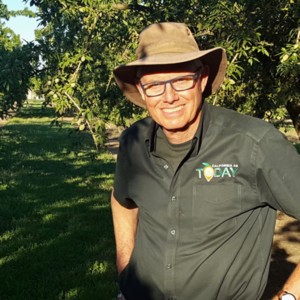Mating Disruption Strategies for Navel Orangeworm
Mating disruption is a sure strategy to prevent navel orangeworm issues in your orchard. David Haviland is a UCANR farm advisor entomologist based in Kern County.He said the tried and true mating disruption products are available from four different companies. “Those companies include Suterra, Pacific Biocontrol, Semios and Trece. There's a product for everybody. If you're a do it yourself person there's products, you can buy and kind of do it all. If you're one of those people that wants to write a check, and walk away, likewise, there's some of these companies that provide full service kinds of programs, where they'll just take care of everything for you.
Haviland comments on efficacy. “You want to have at minimum 40 acres, ideally, you're going to be in the hundred acres or more range. That's where you're going to get the best benefit you want,” said Haviland. “The place that's using main disruption needs to be a square or rectangular shape,” he added.
“And ideally, you're going to be in a situation where you can control your own navel orangeworm destiny. And what I mean by that, is you're not at risk of having a whole bunch of moths flying in from somewhere else that have already mated,” explained Haviland.
“If you're a 20-acre grower in an ocean of pistachios that aren't sanitized, maiting disruption is not going to help you. But if you have almonds, and your neighbors are doing a good job, or your neighbors, are almonds, that's going to help you out,” he said.
“Light breezes are ideal. We don't want no wind. Because the pheromone just sort of sits around the dispensers, but you also don't want 40 mile an hour wind either. Otherwise your main disruption product is going to be benefiting your almond neighbors,” noted Haviland.


















